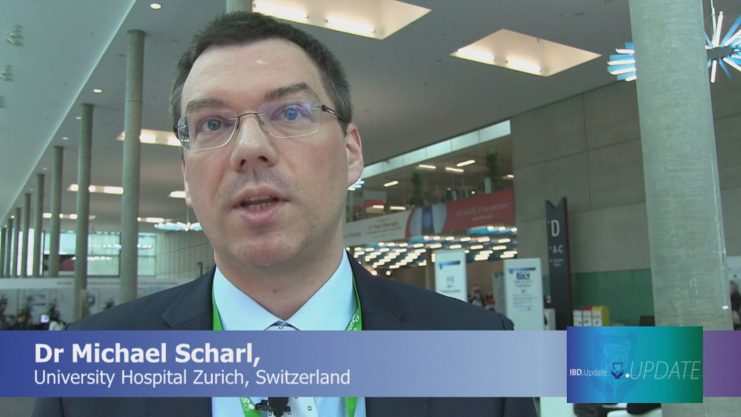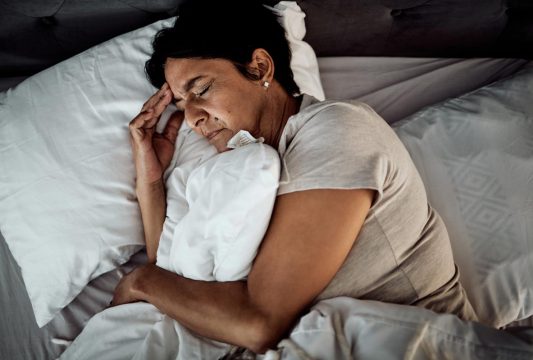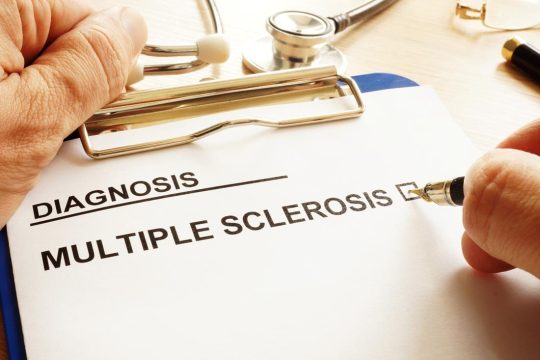Advertisment
ECCO 2018: Evolving concepts of IBD pathogenesis

Perianal fistula is a debilitating complication in CD which affects up to 50% of patients in the course of their disease…
Articles by Maria Dalby. Interviews by Peter Mas Mollinedo.
Dr Michael Scharl (University Hospital Zurich, Switzerland) gives an update on his research into the pathogenesis of fistulizing Crohn’s Disease.
Perianal fistula is a debilitating complication in CD which affects up to 50% of patients in the course of their disease;1 they are slow to heal and very often require a stoma, resection or proctectomy.2 Meeting the urgent need for improved medical treatment options will require a thorough understanding of the underlying pathogenesis of fistulising CD. In a plenary scientific session Professor Michael Scharl outlined how epithelial-to-mesenchymal transition (EMT) of intestinal epithelial cells and induction of IL-13 play key parts in fistula development. EMT is a physiologic process which is involved in, for example, embryogenesis and wound healing; however, EMT also plays a role in pathological processes such as carcinogenesis and metastasis.3 In CD intestinal epithelial cells undergo EMT as part of the healing process of epithelial ulcers, but in this process the transitional cells acquire invasive characteristics which allow them to penetrate into deeper tissue layers and form a fistula.4 Histological characterisation of the transitional cells in CD fistulas shows strong positive staining for TGFβ and the EMT-associated transcription factors SNAIL1 and SNAIL2 around the fistula tract.4, 5 TGF-beta is known as a strong inducer of EMT; in addition, TGFβ also induces IL-13 in the fistula tract.6 IL-13 signalling promotes the expression of β6-integrin which is associated with invasive cell growth.4, 6 Together with evidence of strong expression of TNF and TNF receptor I in and around the fistula tract5 these findings indicate that TGFβ and IL-13 play a synergistic role in the pathogenesis of CD fistula.6 Professor Scharl and his team of co-workers based in Zürich and Jerusalem have developed a human gut xenograft (XGR) mouse model which will allow this pathogenetic mechanism to be documented in vivo. The XGR model consists of human foetal small intestine segments aged 12-18 weeks which are transplanted onto the backs of immunocompromised SCID mice. Systemic lipopolysaccharide treatment and mild skin irritation result in the development of enterocutaneous fistulas after 2-4 weeks. Immunohistochemistry staining of the fistula tract shows that the xenograft resembles human CD fistulas both morphologically and mechanistically. In the experiments the xenograft stained positive for all EMT markers found in human patients. The infiltrate of immune cells in the xenograft contained mainly human immune cells including human CD45+, CD3+ and CD68+ lymphocytes and human NK cells. The investigators concluded that the XGR model offers a reliable in vivo platform for identifying treatment targets and evaluating new therapies for fistulising CD.
A group of investigators in Spain presented a poster (P008) which focused on the role of the Wnt signalling pathway in CD pathogenesis. Resections from 43 CD patients showed significantly different patterns of macrophage infiltration and Wnt ligand expression in patients presenting with stricturing (B2) and penetrating (B3) CD, respectively. Wnt2 was found to promote expression of EMT-associated markers vimentin and SNAIL1 and 2, suggesting it may play a role in the development of fistulising CD.
A poster from the Academic Medical Center in Amsterdam (P044) described a study which showed that curettage material from 7 CD patients undergoing surgical treatment of perianal fistulas contained α4β7-integrin. This study is the first to demonstrate the presence of α4β7-integrin in perianal CD fistulas and the investigators suggested that vedolizumab, a monoclonal antibody against α4β7-integrin, should be explored for the treatment of active CD fistulas.
References
- Schwartz DA, Loftus EV, Jr., Tremaine WJ, et al. The natural history of fistulizing Crohn’s disease in Olmsted County, Minnesota. Gastroenterology 2002;122:875-80.
- Bell SJ, Williams AB, Wiesel P, et al. The clinical course of fistulating Crohn’s disease. Aliment Pharmacol Ther 2003;17:1145-51.
- Nielsen OH, Rogler G, Hahnloser D, et al. Diagnosis and management of fistulizing Crohn’s disease. Nat Clin Pract Gastroenterol Hepatol 2009;6:92-106.
- Bataille F, Rohrmeier C, Bates R, et al. Evidence for a role of epithelial mesenchymal transition during pathogenesis of fistulae in Crohn’s disease. Inflamm Bowel Dis 2008;14:1514-27.
- Scharl M, Weber A, Furst A, et al. Potential role for SNAIL family transcription factors in the etiology of Crohn’s disease-associated fistulae. Inflamm Bowel Dis 2011;17:1907-16.
- Scharl M, Frei S, Pesch T, et al. Interleukin-13 and transforming growth factor beta synergise in the pathogenesis of human intestinal fistulae. Gut 2013;62:63-72.





